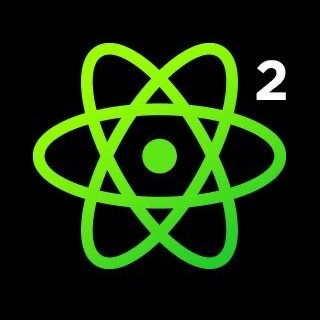I'm going to showcase the React Native architecture we use in our new mobile app at Product Hunt. What we learned, among the way. How we moved what we know from web to mobile. Topics will be designing reusable React components, GraphQL, routing in the app, application lifecycle, keyboard controls, toast messages, and others.
React Native Architecture at Product Hunt
FAQ
Radoslav Stankov is the head of engineering at Produhunt and is based in Bulgaria.
Radoslav Stankov's presentation focuses on the React Native architecture used at Produhunt, detailing how the app is structured and the technical decisions behind its development.
Produhunt chose React Native for their mobile app development because it supports both Android and iOS platforms, and their team had prior experience with React Native and Apollo for GraphQL, which had improved significantly in stability and speed since their initial use.
Key considerations included needing a solution that supported Android, utilizing Apollo with GraphQL for data transfer, and the ability to conduct extensive UI experimentation.
The main architectural goals for Produhunt's app include easy addition of new features, streamlined code organization for easier onboarding, isolation of dependencies, and ensuring extensibility and reusability of components.
Produhunt uses a utility called CreateScreen which helps define screen components, manage data fetching, and handle different screen states to streamline the development process.
In Produhunt's mobile app, GraphQL is central for data management, connecting the backend built with Rails to the frontend, and enabling type safety and component-specific data fetching through Apollo and TypeScript.
Unique features include built-in navigation routes, specialized button components that integrate with GraphQL mutations, and support for dark mode using React Native Dynamic.
Video Summary and Transcription
The speaker discusses their React Native architecture and how they structured their app, choosing React Native over native development due to limited resources and the need for UI experimentation. The architecture consists of support, components, and screens, with a focus on code organization and extensibility. The speaker explains the screen creation process, including the use of React Native Navigation and a state machine pattern. They also highlight the use of GraphQL for data retrieval and navigation between screens. The talk covers the structure of common components, utilities for styling, and support for dark mode. Overall, the speaker emphasizes the importance of isolating dependencies and utilizing a directory structure approach.
1. Introduction to React Native Architecture
Hello, everybody. My name is Radoslav Stankov, and I'm coming from Bulgaria. Today I'm going to talk about our React Native architecture and how we have structured our React app. Produhunt is this website. When we decided to rebuild our mobile app, we had two choices: go native with Swift or go React Native. We had a terrible experience with React Native in the past, but we only had two developers with Swift experience and no Android experience. We also needed to do UI experimentation and support Android, so we chose React.
Hello, everybody. My name is Radoslav Stankov, and I'm coming from Bulgaria. I'm here in Bulgaria, sitting right now. And I'm head of engineering at Produhunt.
And today I'm going to talk a bit about our React Native architecture and how we have structured our React app. But before we get into the technical details, for every good architecture, you have to get the context, like where the team is coming from, what the requirements are, and how the stuff is built.
So Produhunt is this website. This is how we look on the web. And I have given previous presentations around the Produhunt architecture. I won't go into details there. But when we decided to rebuild our mobile app early this year, actually we released it this year, we started a bit later than that. We were wondering, OK, now we should do a big reboot into our mobile app. And for our cases, we have basically two choices.
One was go native with Swift, and the other was go React Native. We really had really terrible experience around more than two years ago when initially we started with React Native. It was quite a bit of a challenge. On the other side, we have only two developers who have some Swift experience, not very new ones, and we have zero developers with Android experience. And our app really needed to run on Android, as well. Also, Apollo, so we use GraphQL for all our data transferring and the best way to use it is Apollo, in my opinion. Apollo for Swift is not as good as Apollo for JavaScript. And our team already knew how to deal with React and Apollo. The other thing we needed for this app was to do a lot of UI experimentations, and again, we also needed Android.
So early in 2020, we were making mobile app experiments for YourStack. So early in 2000, we worked on two apps for a couple of our products and experimentation. One was YourStack, the other was called StackCamp. They were both not released because they were just embedded. We tested some ideas there. So, yeah, don't tell anybody. So from them, we were able to compare the ecosystems from React and Swift. And we decided to go with React just because we needed Android.
2. React Native Architecture Overview
Our team already knew React Native and decided to use it along with GraphQL and Apollo. We prioritize making common operations easy, organizing code, isolating dependencies, and ensuring extensibility and usability. Our architecture consists of three pillars: support, components, and screens. The directory structure of our mobile app reflects this architecture. We start with the top layer, the screens, which are defined in the app GS and utilize React Native Navigation.
Our team already knew React Native, and React Native actually became a lot better than two and a half years ago. It got a lot faster, a lot more stable, and we didn't have the same issues as we had before. And the tech stack we decided to go was, okay, we go with React and React Native. We use GraphQL, we access it through Apollo. And the table steaks, TypeScript Jest and Pretier are basically not a question if we go with the JavaScript ecosystem. And everything done mobile, we are using Fastlane for tooling.
So the things around architecture is, if you don't know where to start, you can very easily get into the situation where you get stuck. So we want to move fast and have breakfast, not breaking things fast. So we want to move. So for our architecture, we have four goals. First is to make the common operations easy so the engineers can easily add new things. Then we need to put code organization so we can onboard new team members very easily into the code base. Isolate dependencies, like in the JavaScript world and in basically every modern world where we're dealing with external dependencies and they can very easily get out of sync, out of date and break a lot of things without our control. And the final thing is extensibility and usability. We want to build things that we can extend and reuse over time. But the most common thing for us is to make the common operations easy so everything a developer has to do every day should be very easy for them.
The way I'm thinking about the parts of the architecture, I'm seeing three pillars. The support, the components and the screens. And they look like that in my head. We have a big support area which helps us build the core reusable components and then we build the screens on top of that. So for somebody more usual, this is the way you can imagine it. You have the pilots, you put them in the lines and they make Voltron and make it really nice. So if you go and see our directory, this is how the directory structure of the mobile app looks. And it represents the architecture of this app. And if you see, if I color code it here, we have support, components and the screens.
So again, talk chip, show me the code. So let's start with the top layer because it actually helps us understand the layers of both if we start reverse. From the screens. So all the screens are defined in the app GS. And here, what we do is we use the react native navigation.
Check out more articles and videos
We constantly think of articles and videos that might spark Git people interest / skill us up or help building a stellar career
Workshops on related topic
Tests rely on many conditions and are considered to be slow and flaky. On the other hand - end-to-end tests can give the greatest confidence that your app is working. And if done right - can become an amazing tool for boosting developer velocity.
Detox is a gray-box end-to-end testing framework for mobile apps. Developed by Wix to solve the problem of slowness and flakiness and used by React Native itself as its E2E testing tool.
Join me on this workshop to learn how to make your mobile end-to-end tests with Detox rock.
Prerequisites- iOS/Android: MacOS Catalina or newer- Android only: Linux- Install before the workshop
In this three-hour workshop we’ll address these questions by discussing how to integrate Detox into your development workflow. You’ll walk away with the skills and information you need to make Detox testing a natural and productive part of day-to-day development.
Table of contents:
- Deciding what to test with Detox vs React Native Testing Library vs manual testing- Setting up a fake API layer for testing- Getting Detox running on CI on GitHub Actions for free- Deciding how much of your app to test with Detox: a sliding scale- Fitting Detox into you local development workflow
Prerequisites
- Familiarity with building applications with React Native- Basic experience with Detox- Machine setup: a working React Native CLI development environment including either Xcode or Android Studio





























Comments